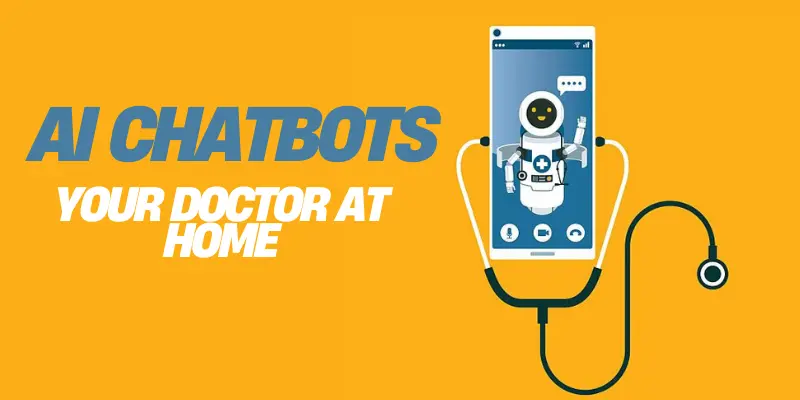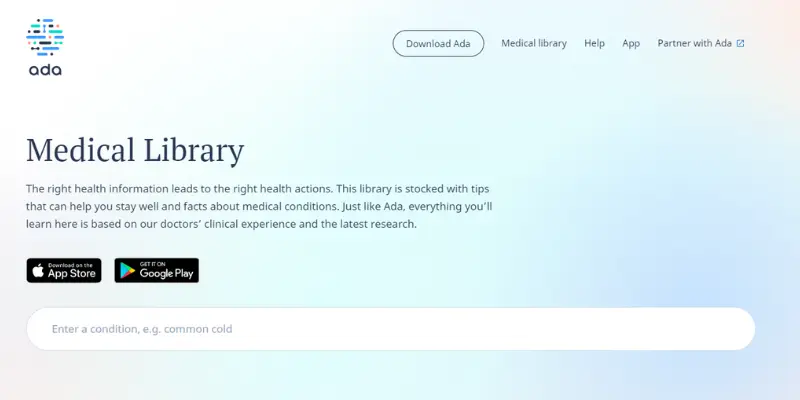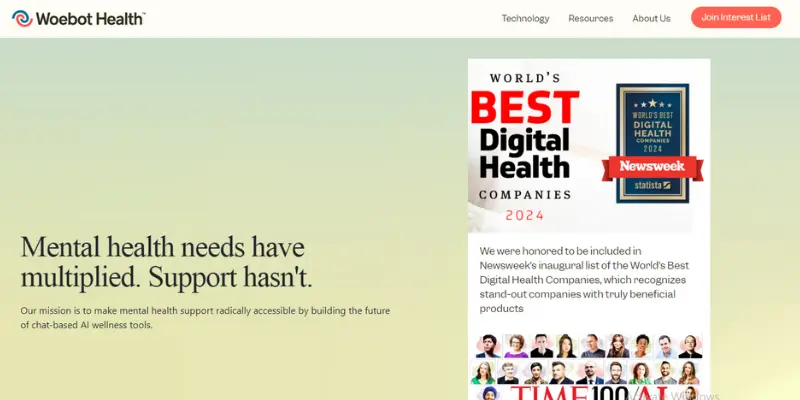Real-Life AI Chatbot Projects Helping Patients
Published: 22 Apr 2025
Let’s start with something many people know—customer service chatbots on websites. They help answer simple questions like store hours or return policies. Now, imagine something much more powerful. Real-life AI chatbot projects helping patients which don’t just answer FAQs but also support people during health scares, remind them to take medicine and even guide them after surgery for quick recovery. While both use AI, healthcare chatbots do something unique. They care for real people with real health problems. That’s a big difference and it’s changing lives every day.

In this article we are going to discuss the chatbot projects which helped the patients in real life.
What Are AI Chatbots in Healthcare?
Let’s make it simple. An AI chatbot is a smart computer program that can talk to people. You type something in and it will give helpful answers just like texting a friend. In healthcare, these chatbots are trained to understand health questions and respond with useful advice.
Also Read: How to Build An AI Chatbot For Healthcare From Scratch
How Do They Work in Healthcare?
AI chatbots in healthcare do more than just chat. They can:
- Answer questions like “What are the signs of pneumonia?”
- Remind patients to take their medicine
- Help people book doctor visits
- Check symptoms and suggest next steps
They use something called artificial intelligence that means they learn from lots of data and try to give the best answer.
Example
Imagine you wake up with a sore throat and a headache. You are worried but it’s too early to call your doctor. So, you open a health chatbot on your phone. You type in your symptoms. The chatbot asks a few simple questions. Then it tells you that it might be a cold and suggests you rest, drink fluids and see a doctor if it gets worse.
Helpful, right?
Why Are They Important?
Here’s why these chatbots matter:
- 🕒 They save time– No need to wait on hold or search online.
- 👩⚕️ They support doctors– By handling simple tasks, they free up time for real care.
- ❤️ They help patients feel supported– Especially when they are scared or unsure.
Real-Life Chatbot Projects Helping Patients
Now that we know what AI chatbots are, let’s look at how these are helping real people in real situations. These chatbot projects are not just ideas, they are being used today by patients all around the world. Each one is built to solve a specific health problem. Let’s break them down one by one.
Also Read: Top 5 AI Chatbot Ideas in Healthcare
A. Ada Health
Ada Health is a chatbot that acts like a health checker. It asks you simple questions about your symptoms and gives suggestions.
Ada helps users to figure out what might be wrong when they feel sick. It does not give a final diagnosis but offers helpful advice on what to do next. Ada is super easy. Just open the app, type how you feel and follow the steps.

AI Features That Make It Smart
- Uses medical data from real doctors
- Learns how to ask the right questions
- Gives health suggestions based on your answers
Real-Life Example
A teenager wakes up with a headache. He uses Ada on their phone. Ada asks about their symptoms, then suggests it may be a sign for prolonged dehydration or just seasonal effect. It advises them to rest and visit a doctor if things get worse.
Pros and Cons
✅ Easy to use
✅ Fast results
❌ Doesn’t replace a real doctor
❌ Needs an internet connection
Also Read: AI Chatbot Projects in Healthcare For Students
B. Woebot Health
Woebot Health is a friendly mental health chatbot. It talks to users and helps them manage stress, sadness or anxiety. Woebot checks in daily. It uses small talk and science-backed advice to support emotional health. It doesn’t require signing up. Just start chatting in the app like texting a friend.

AI Features That Make It Smart
- Understands feelings through messages
- Offers mental health tips based on your mood
- Learns what helps you feel better
Real-Life Example
A college student feeling anxious about exams chats with Woebot. It responds with calming techniques and helps them reframe negative thoughts.
Pros and Cons
✅ Great for emotional support
✅ Private and non-judgmental
❌ Not for deep mental health conditions
❌ Limited in emergency situations
C. Buoy Health
Buoy is a chatbot that listens to your symptoms and connects you to the right care. It is very simple and has a clean interface. No medical knowledge needed to use it.
It asks smart questions and guides you whether you should go to urgent care, rest at home or book a doctor visit.

AI Features That Make It Smart
- Follows a medical decision model
- Adapts its questions based on your answers
- Helps in matching your symptoms to the right treatment path
Real-Life Example
A mom uses Buoy at midnight when her child has a fever. Buoy asks key questions and suggests she give fluids and visit the doctor in the morning.
Pros and Cons
✅ Quick symptom guidance
✅ Connects users to care options
❌ May not cover rare conditions
❌ Some users may prefer human advice
D. Florence
Florence is like your personal health assistant. It’s especially helpful for daily health tasks. It reminds you to take your pills, tracks your weight and even explains medical info in a simple way and works on Facebook Messenger and Skype. It’s very easy to use, even for seniors.

AI Features That Make It Smart
- Sends reminders
- Tracks simple health stats
- Answers health questions with short, clear replies
Real-Life Example
An older adult with diabetes uses Florence to remind them to take insulin and track meals.
Pros and Cons
✅ Helpful for managing daily care
✅ Friendly tone makes it comforting
❌ Needs internet access
❌ Not suitable for emergencies
Suggested article, ‘Best Platforms to Build Healthcare AI Chatbot‘ if you are thinking to start your own AI chatbot project in healthcare.
E. IBM Watson Assistant for Health
This is a powerful chatbot used by hospitals and healthcare companies to answer patient questions. Usually built into hospital websites or kiosks. Simple interface for all ages.
Patients can ask things like “What time is my appointment?” or “What does this medical term mean?” and get fast answers.

AI Features That Make It Smart
- Understands natural language
- Connects with hospital systems
- Gives custom answers based on user needs
Real-Life Example
A patient in a hospital waiting room uses a screen with Watson to ask, “How long until I see my doctor?” It replies with the current wait time and next steps.
Pros and Cons
✅ Eases hospital staff workload
✅ Speeds up patient communication
❌ Not used by individual patients directly
❌ Can be expensive for smaller clinics
These chatbots may seem different but they all share the same goal which is helping patients feel supported and informed. Some are for mental health. Others are for checking symptoms or reminding you to take medicine. And many are already making life easier for both patients and doctors.
Why Real-Life AI Chatbots Matter in Patient Care
So, why are these chatbot projects such a big deal in healthcare? It’s simple. They make life easier for both patients and healthcare workers. Let’s explore how.
1. They Make Healthcare Faster
Many people wait hours or even days for answers to basic health questions. Chatbots give instant help.
Instead of waiting on hold to talk to a nurse, a patient can open a chatbot and ask, “What should I do if my child has a fever?” The chatbot replies in seconds.
Why it matters:
- Saves time
- Offers comfort when doctors are not available
- Helps patients to take quick action
2. They Help People Who Are Nervous or Shy
Some people feel embarrassed asking health questions especially about personal topics. Chatbots feel safe because they do not judge.
A teen wants to learn about birth control but feels too shy to ask a doctor. A chatbot can explain it in private.
Why it matters:
- Encourages more people to ask questions
- Reaches patients who might otherwise stay silent
3. They Support Patients 24/7
Hospitals can’t always be open for every little question. But chatbots don’t sleep.
It’s 2 a.m and someone is having trouble breathing. The chatbot checks their symptoms and tells them to call emergency services.
Why it matters:
- Offers round the clock help
- Gives peace of mind at all hours
4. They Keep Health on Track
Many patients forget to take their medicine or miss check ups. Chatbots send reminders and keep records.
A chatbot reminds an elderly man to take his heart pills every morning and tracks his progress.
Why it matters:
- Helps patients stay healthy
- Makes long-term care easier to manage
5. They Help Doctors and Nurses Focus
Doctors are busy. Chatbots can take care of the simple stuff like answering FAQs or collecting patient info, so healthcare teams can focus on more serious problems.
Before a clinic visit, a chatbot asks a patient about their symptoms. The doctor reviews it before the appointment starts.
Why it matters:
- Saves time for both patients and doctors
- Makes appointments more useful
6. They Reach More People
In places where there are not many doctors available, these chatbots can still offer basic help.
Someone in a small town uses a chatbot to learn how to care for a wound before they get to a hospital.
Why it matters:
- Bridges the gap in healthcare access
- Offers basic care in underserved areas
💡 Quick Tip for Patients Using Chatbots
Always treat chatbots as a first step not the final answer. They help you to understand what to do but they do not replace real doctors. If your symptoms are serious, always see a medical professional.
Common Questions Patients Ask Chatbots
Patients ask all kinds of questions when they use health chatbots. Most of the time, these are everyday concerns that don’t need a full doctor visit. Let’s look at some common ones and how chatbots help.

I. “Can I take this medicine now?”
People often wonder if it’s safe to take a dose, especially when they are already on something else.
Chatbots ask a few questions:
- What medicine do you want to take?
- Are you on any other drugs?
- Do you have allergies?
Then they offer advice or suggest talking to a doctor.
Example:
Someone has a headache and wants to take ibuprofen but is already on blood pressure pills. The chatbot helps them check if it’s safe.
II. “Should I see a doctor for this symptom?”
Sometimes it’s hard to tell if a symptom is serious. Chatbots help you figure out your next step.
They go through your symptoms one by one. Then they give suggestions like:
- “Rest and drink fluids.”
- “Visit a clinic if this continues.”
- “Call emergency services now.”
Example:
A person has chest pain. The chatbot asks a few questions and then tells them to go to the ER right away.
III. “What can I eat if I have diabetes?”
Managing serious health conditions like diabetes can be tricky without having proper support. Chatbots give simple food tips.
They explain which foods are good, which ones to avoid and even suggest healthy recipes.
Example:
A man with type 2 diabetes asks, “Can I eat pasta?” The chatbot suggests whole wheat pasta and adds a reminder to watch portion sizes.
IV. “When is my next appointment?”
Patients forget appointments all the time. Some chatbots connect to hospital systems and share schedule details.
They can check your upcoming visits, remind you to confirm them or even help you reschedule.
Example:
A woman messages the chatbot, “When is my check-up?” It replies, “Your next appointment is Thursday at 10:00 AM with Dr. Jones.”
Things to Keep in Mind While Using a Healthcare Chatbot
AI chatbots can be helpful but there are a few important things you should always remember. Let’s keep it clear and safe.
A. Not a Doctor Replacement
Chatbots are smart but they can not be real doctors. They can’t check your body, do tests or give full medical treatment.
What this means for you:
Use chatbots to learn more or ask quick questions. But if you are feeling very sick, don’t wait and see a doctor right away.
Example:
If you have chest pain, don’t rely on a chatbot. Go to the hospital as soon as possible.
B. Data Privacy Matters
Chatbots collect health information. That’s personal stuff. You want to be sure it stays private and safe.
What this means for you:
Only use chatbots that say they protect your data. Look for apps or websites that follow HIPAA in the U.S. or other privacy rules.
Tip:
Check the chatbot’s privacy policy before you use it. If it’s not clear, don’t share too much.
C. Use Trusted Chatbots Only
Not every health chatbot is safe or reliable. Some are just apps with no medical backing.
What this means for you:
Choose chatbots that come from hospitals, health companies or well known apps. These tools are more likely to give accurate answers.
Examples of trusted chatbots:
- Ada Health
- Mayo Clinic Chatbot
- Florence
- Babylon Health
Conclusion
So guys! In this article, we covered Real-Life AI Chatbot Projects Helping Patients in detail. I personally recommend trying one of these health chatbots the next time you have a simple health question. It’s a quick and easy way to get help, especially when your doctor is not available. Just remember, always see a real doctor for anything serious. Curious to see how they work? Try one out today and see for yourself how helpful these smart tools can be!
More Queries?
Here are frequently asked questions about AI Chatbot Projects Helping Patients in real life;
Many healthcare chatbots like Ada Health offer free basic versions, while others might require a subscription or be covered by your insurance. Some are provided for free by hospitals or healthcare systems as part of their patient services. Always check the pricing before sharing personal health information.
Healthcare chatbots are increasingly accurate but still cannot match the expertise of trained medical professionals. They typically achieve 70-85% accuracy in preliminary assessments but lack the clinical judgment and examination capabilities of physicians. Always consider chatbot advice as a starting point, not a final diagnosis.
Reputable healthcare chatbots comply with healthcare privacy laws like HIPAA in the US or GDPR in Europe. Before using any health chatbot, check their privacy policy to confirm they encrypt your data and don’t sell your information to third parties. Remember that different chatbots have different privacy standards, so choose ones from established healthcare organizations when possible.
Many doctors cautiously support using reputable healthcare chatbots as a first step for minor concerns or medication reminders. They generally view them as helpful tools for improving access to basic healthcare information but not as replacements for in-person care. The medical community’s acceptance is growing as these technologies improve and demonstrate positive outcomes.
Mental health chatbots like Woebot can provide immediate coping strategies but aren’t designed for crisis intervention. For mental health emergencies, they will typically redirect users to crisis hotlines or emergency services. These tools work best for ongoing support and preventive care rather than acute psychological emergencies.
Most healthcare chatbots are designed with simple interfaces that require no special technical knowledge. If you can use messaging apps like WhatsApp or Facebook Messenger, you can typically use a healthcare chatbot. Many are accessible via smartphone apps or websites with straightforward and conversational interfaces.
Leading healthcare chatbots increasingly offer multiple language options, with many supporting 5-10 major world languages. Availability varies by chatbot, with some focusing on specific regions while others aim for global reach. Language capabilities continue to expand as these services grow in popularity worldwide.
Healthcare chatbots cannot legally prescribe medications on their own. Some chatbots integrated with telehealth services can connect you to licensed providers who can prescribe if appropriate. The chatbot itself serves only as a communication tool in the prescription process, not as the prescriber.
Healthcare chatbots are regularly updated with new medical information by their development teams. They undergo continuous training using recent medical literature, expert input and user interaction data. Most reputable medical chatbots have medical professionals involved in overseeing their knowledge base and updates.
Many healthcare chatbots now feature simplified interfaces specifically designed for elderly users with limited tech experience. Voice activated options and large text displays make these tools more accessible to older populations. For maximum benefit, initial setup assistance from a family member or caregiver may be helpful.





